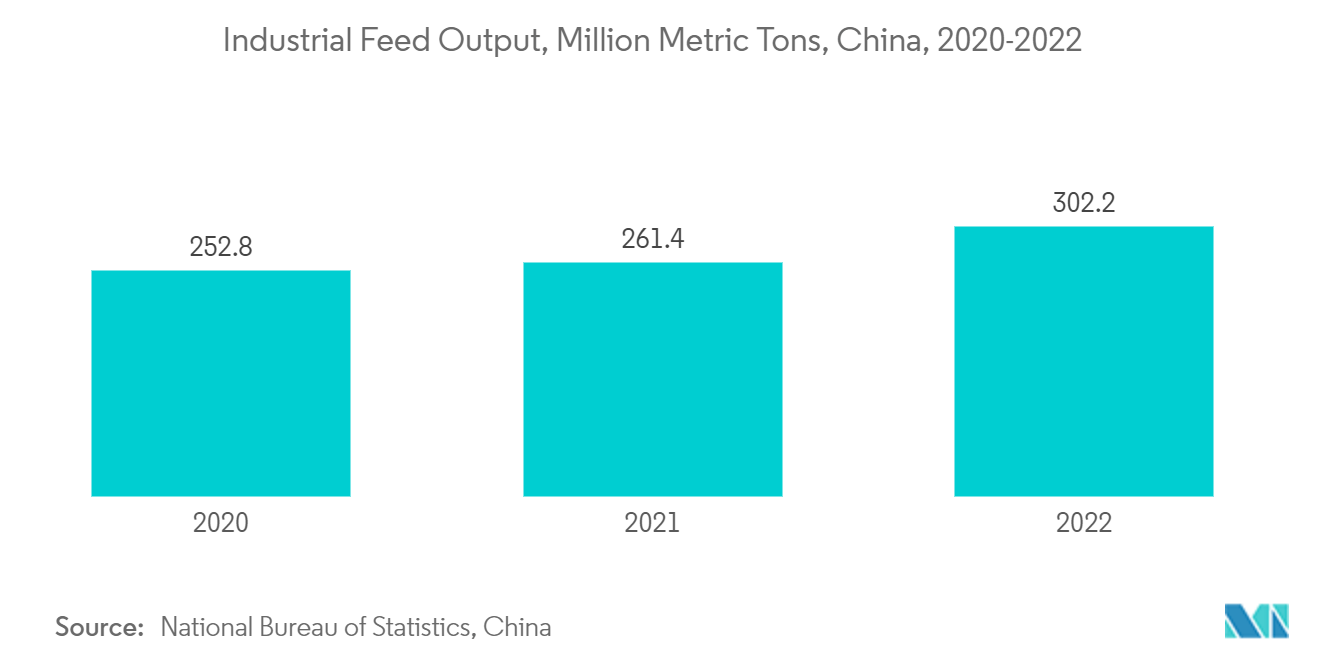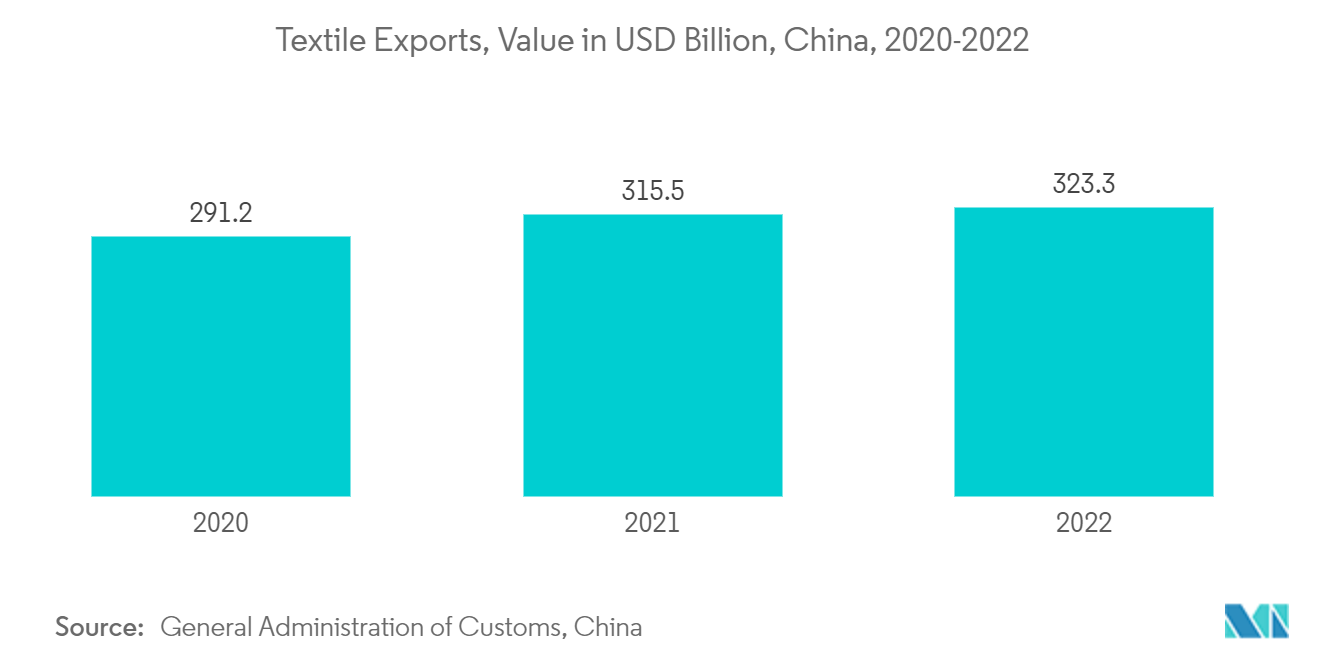Market Trends of Asia-Pacific Formic Acid Industry
Growing Demand for Animal Feed and Silage Additives
- Animal feed and silage additive manufacturers use formic acid as an additive in solid or liquid form, owing to its anti-bacterial and digestive properties. With the growing population of animals, food security for them is an important issue that should be maintained.
- Formic acid inhibits harmful bacteria in the feed through acidification and supports feed digestion with better feed conversion. Formic acid is the second most vital organic acid, inhibiting bacterial growth. It is an essential element for high-quality forage silage production to impede the proliferation of pathogens and is effective for silage microorganisms' growth inhibition. Additionally, the property of formic acid to preserve feed mixes makes it more unique, hence upsurging the demand for formic acid in the market over the period.
- China, India, and Vietnam are amongst the leading feed producers in the region. According to the most recent China Feed Industry Association (CFIA) report, China's total industrial feed production in 2022 was estimated at 302.2 million metric tons, showcasing a rise of 3% year on year. Pig and poultry feed production accounted for 45% and 40% of overall feed output, up from 45% and 41% the previous year.
- The increase in commercial feed tonnage was driven by the recovery and transformation of the pig sector in the country, where swine farms were witnessed contracting with professional food mills rather than utilizing food waste. Feed manufacturers in China saw expanding plant facilities in anticipation of increased demand over the coming years.
- For instance, in July 2022, AB Agri launched a new 240-kilo-ton capacity feed mill in Tongchuan City, Shaanxi Province, China, to significantly enhance production capacity in the region. The new 34,000 sq m plant is AB Agri China's second largest and includes separate production lines for swine and ruminant feeds.
- The animal feed market in India is classified into three broad categories: aqua feed, poultry feed, and cattle feed. The poultry feed segment in India dominates the market. However, in the recent year, the aqua feed segment also witnessed notable growth. Several companies witnessed investment in the aqua-feed market in line with the increasing demand.
- In April 2023, Maharashtra Feeds commenced a fish feed mill in Lucknow, Uttar Pradesh, with a production capacity of 35 kilo metric tons per year. With this new production capacity, the company aims to cater to the demand for fish feed from various regions within India.
- All the above factors indicate the substantial demand for formic acid from the animal feed and silage additives industry.

China to Dominate the Market in Asia-Pacific Region
- China is the leading country generating the highest demand for formic acid in the Asia-Pacific region. It is due to the consistent increase in the production capabilities of animal feed and silage additives, textiles, and pharmaceuticals which are its prominent application segments.
- In the textile industry, formic acid is used for several applications. The product is used to stabilize the color of the fibers, dyeing natural and synthetic fibers such as wool and nylon, and also to neutralize the alkaline solution when washing the fabric.
- China is the world's largest producer and exporter of textiles and clothing. With enormous production capacity, China contains an oversupply of textiles and clothing products. However, the increasing labor costs and rising global protectionism weakened its competitiveness.
- The China National Textile and Apparel Council (CNTAC), the governing body of China's textile and apparel industry, under its 14th five-year plan, focused on relying more heavily on its domestic market to support its growth. Moreover, it intends to continue investing in textile and apparel factories overseas, mainly through the 'Belt and Road Initiative. China intends to develop a 'greener' and more sustainable textile and apparel industry.
- China is the leading global manufacturer and exporter of textile products. In 2022, China experienced a 2.53% increase in its exports of textiles and apparel, reaching a total value of USD 323.3 billion compared to the previous year.
- Further, by 2025, it is projected by the China National Textile and Apparel Council (CNTAC), the regulatory authority overseeing China's textile and apparel sector, that the annual retail sales of clothing in China could surpass USD 415 billion.
- Formic acid is used for the synthesis of various pharmaceutical drugs or APIs. In the World Pharma Stage, China's pharmaceuticals market is the second largest after the United States due to high domestic demand from hospitals and the large production base of APIs (Active Pharmaceutical Ingredients).
- China is a current global leader in the manufacturing and export of APIs, about 20% of the world's API production. According to the National Medical Products Administration (NMPA) statistics, China witnessed a record rise in new drug approvals in 2022. The country stood strong regarding new drug approvals by NMPA, which stood at 178 new drugs.
- All the factors mentioned above are likely to keep China ahead of other countries in the formic acid market in the Asia-Pacific region.


